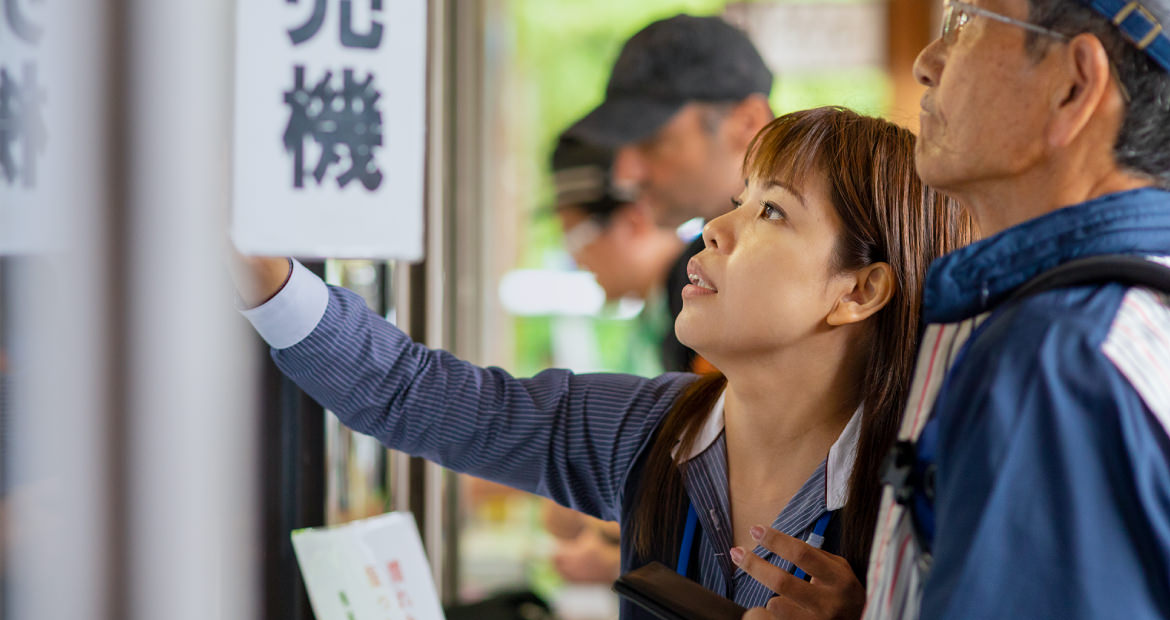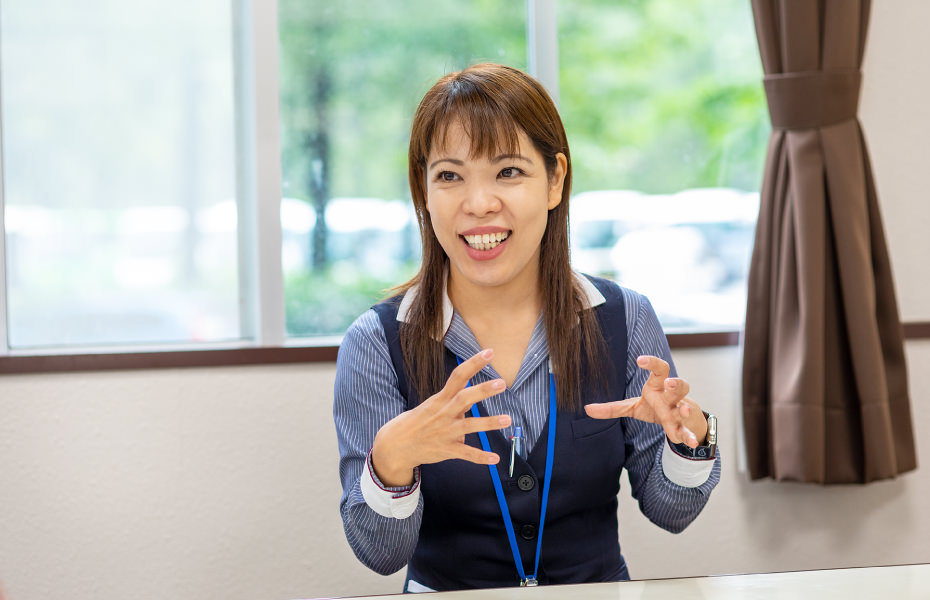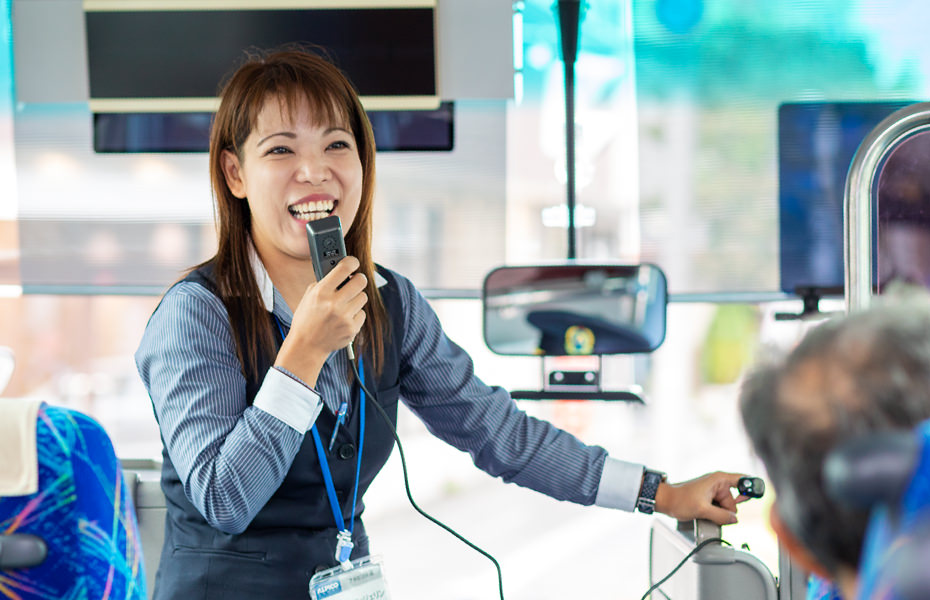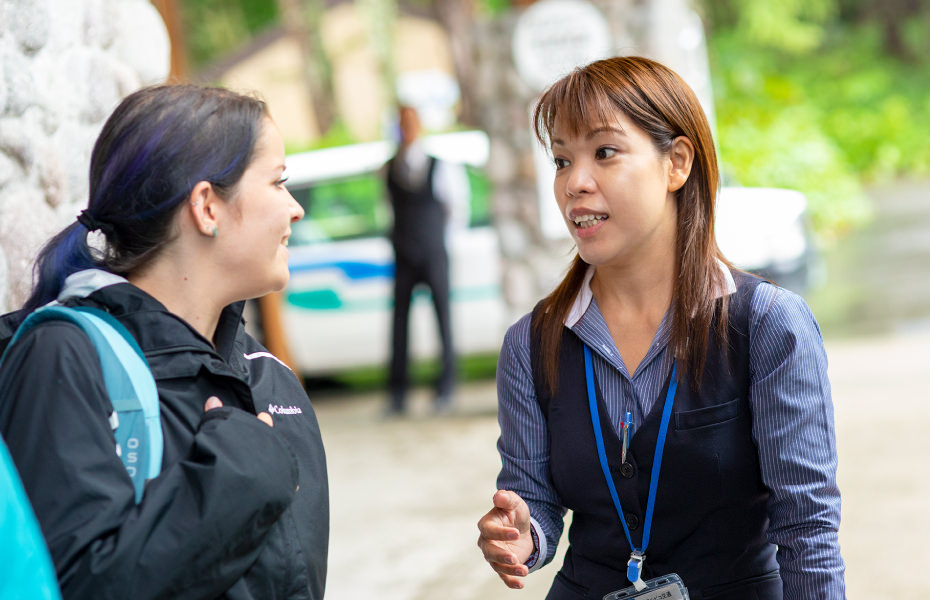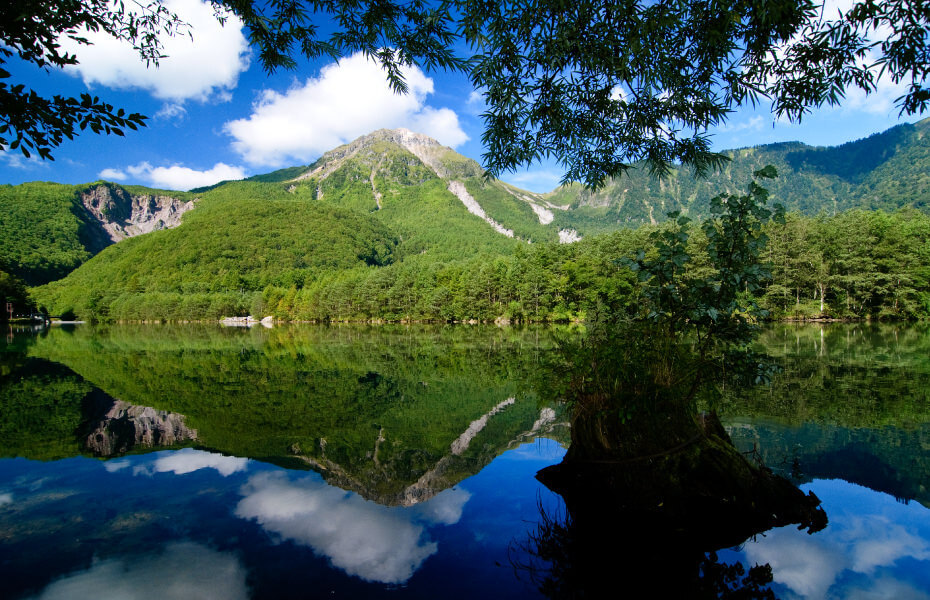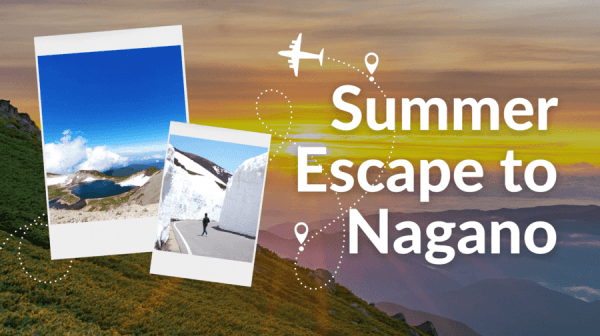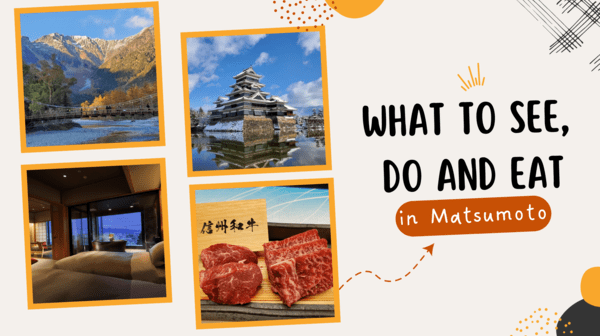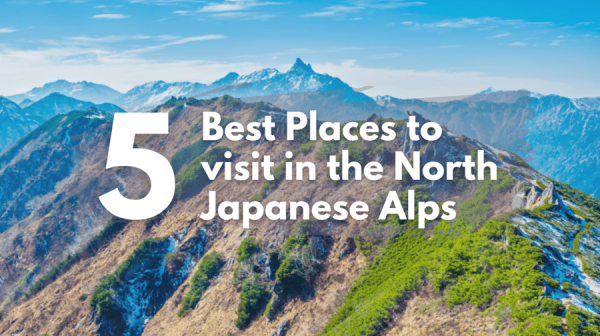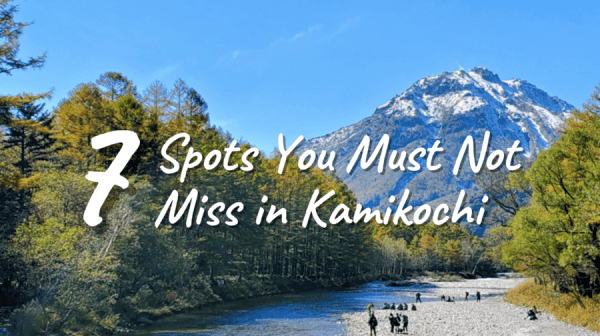Summary
- 1. Interviewing with Mrs. Kawakami
- 1.1. What inspired you to become a tour guide for bilingual bus tours?
- 1.2. What’s important for you when you’re talking to people from overseas about the beauty of Matsumoto and Kamikochi? Is there anything you do differently?
- 1.3. Have you had any instances where you were communicating with the passengers and it made you feel happy and glad that you were doing this job?
- 1.4. Do you have a favorite view of Kamikochi that you would love people to know about? If so, why, and what makes it enticing?
- 2. Bilingual Guide on Shin-Shimashima - Kamikochi Bus
My first visit by bus blew me away and I want more international tourists to get a taste of that same awe-inspiring experience.
Interviewing with Mrs. Kawakami
“Conducting bus tours as a bilingual tour guide was my calling”, says Evangeline Kawakami who came to Japan seventeen years ago. Originally doing translation and interpreting work for the Matsumoto City office, Evangeline was offered to become a bilingual tour guide for bus tours starting in 2018. Feeling as if she had found her calling, she accepted the offer on the spot. Day after day, she works hard to make the beauty of Matsumoto and Kamikochi more widely known amongst international tourists.
The number of international visitors who boarded the bus travelling between Shinshimashima Station (one of the embarkation and disembarkation points along the route bound for Kamikochi), Kamikochi, Norikura and Shirahone Onsen during the peak season was around 5000 in 2014, but this number has apparently skyrocketed to around 12,500 in 2017.
The bilingual bus tours bound for Kamikochi that depart from Matsumoto Bus Terminal are conducted once a day by proficient English-speaking female tour guides who are on board for the entire journey. The bilingual services were launched as part of the city’s efforts to improve services for the rapidly increasing number of foreign passengers. Conducting tours in English and Japanese, day after day, Evangeline brushes up on her knowledge and commentary on Chubu Sangaku National Park, and other sightseeing spots along the bus route. We asked her about what tour guiding means to her, and what motivates her to put her heart into it everyday.
My job is to introduce people to the things that I feel make Matsumoto and Kamikochi fascinating, both in English and Japanese. I want to convey this fascination in a way that’s also easily understandable for overseas visitors.
What inspired you to become a tour guide for bilingual bus tours?
Kawakami: I was originally doing translation and interpreting work for the Matsumoto City office. One day, they asked me if I was interested in working as a tour guide for bilingual bus tours, and I jumped at the opportunity. I had never done anything like it before and I really wanted to give it a go. It required me to speak in English and Japanese which was really cut out for me and I thought it would be a learning opportunity for me as well. It was as if all the work I had done over the years had paid off, and I had found my calling. It felt like it was meant to be.
This year marks my seventeenth year of living in Japan. I’ve spent all these years in Azumino and Matsumoto – two cities which are very rich in nature and boast extremely beautiful snowy mountains in winter. They’re tranquil places and I feel very peaceful when I look at the mountains every morning. But to tell you the truth, I didn’t know anything about Kamikochi. I had always wanted to go but I never had the opportunity to, and I only got to visit it for the first time once I started this job. I remember how amazed I was by the breathtaking scenery I saw on that first visit and all the different elements that made up the landscape, the likes of which I’d never seen before. I want to show all the tourists the same natural wonders I experienced that day and everything that creates them.
Interactions founded on friendliness and respect. Smiling is the most important thing – that’s the philosophy behind our hospitality.
What’s important for you when you’re talking to people from overseas about the beauty of Matsumoto and Kamikochi? Is there anything you do differently?
Kawakami: Smiling is important to me because smiles transcend language barriers and everyone understands them regardless of whether they speak English or Japanese. I also don’t force myself to try and say words that I can’t say well. It’s different for me because I’m not Japanese, so I work around these words by saying them in a way that’s easy for me. One thing I keep in mind when I’m interacting with the guests is to add “sir” and “madam” if they’re from overseas. It lets me interact with the passengers in a friendly way but still lets me address them in a respectable manner. What’s important is that the passengers are happy and they have something to smile about. That’s one part of our hospitality.
Studying and practicing how to explain things in an easily understandable way is tough, but I enjoy practicing with my Japanese colleagues who I look onto for inspiration. Their Japanese commentary on the route between Shinshimashima Station and Kamikochi are particularly insightful. I listen to all sorts of different commentary, identify what makes each of them interesting, and then make my own version as well as an English version. It’s not like there’s a manual, so each tour guide tweaks the commentary in her own way. I polish it every single time, so the content now is quite different from what it was when I first started.
For example, I used to just say the name of the bus stop and nothing else. Now, I elaborate by explaining the attractions and places of interest of each stop. I copy my colleagues’ commentary and how the experienced guides conduct their tours, and if there’s something I like, I incorporate it into my own tour guiding. In my case, I speak in Japanese and English, so I need to speak twice as much as everyone else. That’s why I also think about and adjust my timing when I speak. When I watch the experienced tour guides, it really makes me want to improve more! One day, I want to be able to conduct long tours without looking at my notes, but facing the passengers and looking at everyone’s faces because I think my smiles and explanations will be more engaging this way.

Detailed tour guiding notes written by Evangeline who brushes up on them every time to make them more understandable.
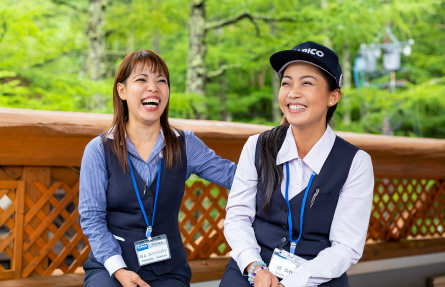
Ms. Nomura - fellow colleague who is also from the Philippines. Always helping each other out, together they are the backbone of the bilingual bus tours.
From passengers starting a conversation with me, to receiving gifts. All the interactions I have on the tours are heart-warming experiences that I’ve never had before.
Have you had any instances where you were communicating with the passengers and it made you feel happy and glad that you were doing this job?
Kawakami: I felt the happiest when I received a handmade brooch from an elderly passenger. She told me to keep up the good work and that was really touching! I also feel really happy when passengers respond to what I’m saying during the tour by laughing or by pointing at the sights I’ve just mentioned. When the passengers are disembarking, I sometimes get a chance to communicate with them, and receive words like “It was fun”, or “Keep up the good work” or “Can I buy printed guide materials somewhere?” It’s also moments like these when I feel glad that I do what I do.
Even though we’re only together for a short time, the passengers and us guides, we’re all travelling companions sharing the moments leading up to our arrival in Kamikochi. Tour guiding really tends to be a one-sided affair but I focus on communication and try to have fun with the passengers wherever I can. Apart from this, I don’t just introduce myself, but I always introduce the driver as well. “This is our team today and we’ll be taking you to Kamikochi!” - that’s the feeling I try to create along with a sense of togetherness.
I want to tell people about the breathtaking scenery and stories I encountered, and show them the views that can only be seen from a bus.
Do you have a favorite view of Kamikochi that you would love people to know about? If so, why, and what makes it enticing?
Kawakami: There are two views that I want to recommend and they’re both views that you can only see from the bus. The first one is the view of Azusa Lake and the mountains you see after you pass through the Nyuyama Tunnel in the Kisoji direction. Once you come out of the tunnel, the view just suddenly unfolds and spreads out in front of your eyes. There are always cries of delight from the passengers the moment the bus leaves the tunnel. The view has such a strong impact and I was awestruck when I first saw it as well. It’s slightly off the usual route, but I always make sure to ask the driver to detour through it when it’s sunny.
The second one is the view of Taisho Pond. It’s one of the more famous locations in Kamikochi, but the view is slightly different when you look at it from the bus. After you see Mt. Yakedake, the road curves right and in that moment, you start to see the Hotaka Mountain Range. Seeing all three views of Mt. Yakedake, Taisho Pond, and the Hotaka Mountain Range run by in one go is one of the unique advantages of traveling by bus. I also think the story of how Taisho Pond was created by Mt. Yakedake when it erupted is fascinating. It’s hard to believe that such a beautiful pond was created by an eruption. I want to show people these kinds of views that can only be seen from a bus, and tell them about the history and stories that I find interesting about the scenery.
Right now, the bilingual bus tours are only conducted once a day. I would love to have more visitors from overseas and I want to interact with people from many different countries. Not to mention that I want people to see the wonderful landscapes of Kamikochi. In future, it would be lovely if we could have more guides like me, and if we could increase the number of bilingual bus services.
Bilingual Guide on Shin-Shimashima - Kamikochi Bus
Guided tourist bus tours are now underway! Enjoy the passing scenery while listening to tour commentary. A tour guide will take you on a journey through Kamikochi and other attractions along the bus route right until the final stop. (One service only)
This service is temporary not available in 2021.

